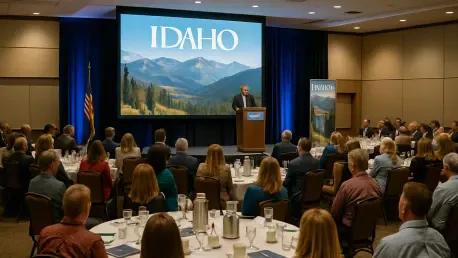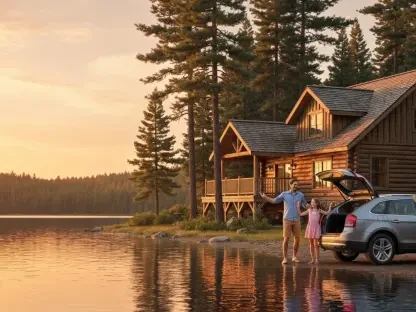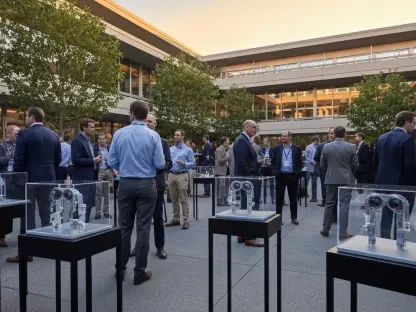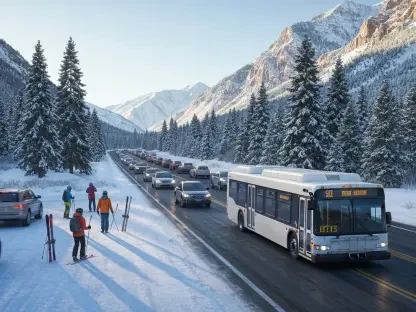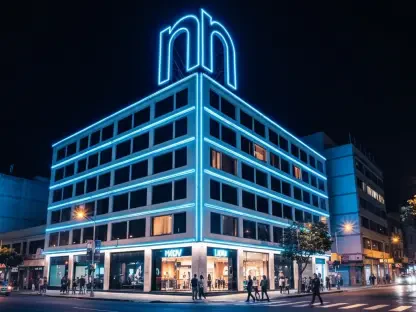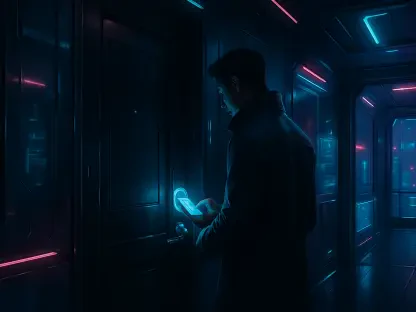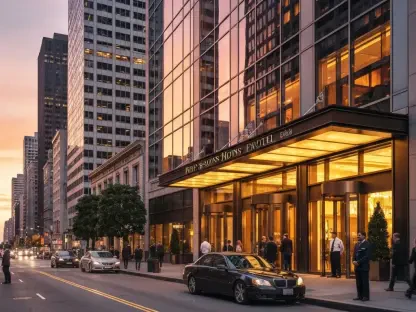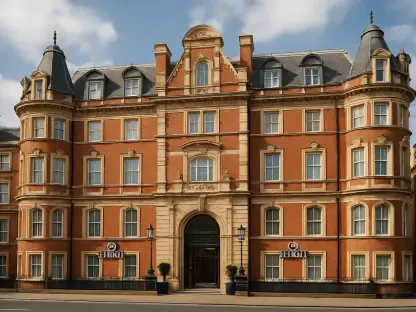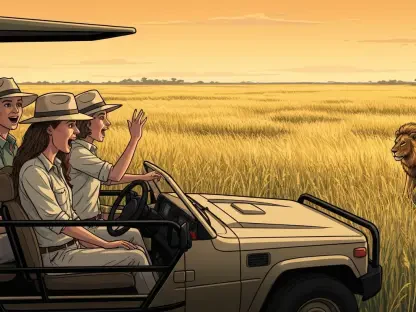I’m thrilled to sit down with Katarina Railko, a seasoned expert in hospitality and a prominent figure in Idaho’s travel and tourism industry. With her deep knowledge of entertainment, events, and a passion for conferences like the Idaho Conference on Recreation and Tourism (ICORT), Katarina offers invaluable insights into how tourism drives regional economic growth in the Gem State. Today, we’ll dive into the significance of this year’s ICORT, the impact of tourism on Idaho’s economy, and the creative strategies shaping the future of the industry.
Can you tell us about the Idaho Conference on Recreation and Tourism and what makes it such a pivotal event for Idaho’s tourism industry?
Absolutely, Olivia. The Idaho Conference on Recreation and Tourism, or ICORT, is a cornerstone event for anyone involved in tourism in our state. Held annually, it brings together a wide range of stakeholders to discuss trends, challenges, and opportunities. The main goal is to empower businesses and organizations to enhance the visitor experience while boosting the economy. It’s happening this year from October 20-22 in Idaho Falls, and it’s really a hub for learning, networking, and celebrating the achievements within our industry.
Who typically attends ICORT, and who do you think benefits most from being there?
ICORT attracts a diverse crowd, from destination marketing organizations to local business owners in hospitality—think hotels, restaurants, breweries, and wineries. But it’s not just them; retail stores, museums, performing arts groups, and any attraction that engages with visitors also join in. It’s meant for anyone who wants to understand and contribute to Idaho’s tourism landscape. I’d say the biggest beneficiaries are small businesses and emerging destinations that get to connect with larger players and learn strategies to grow.
Why was Idaho Falls chosen as the host city for this year’s conference, and what’s special about it from a tourism perspective?
Idaho Falls is a fantastic choice because it embodies so much of what makes Idaho a unique destination. It’s a gateway to natural wonders like Yellowstone and the Snake River, which are huge draws for tourists. Hosting ICORT there highlights the city’s role in eastern Idaho’s tourism scene and showcases its growing infrastructure for events. Plus, it gives attendees a chance to experience the area firsthand, which ties directly into the conference’s mission of promoting Idaho’s appeal.
What can attendees expect from the venue itself, the Blue Cross of Idaho Conference Center, during the event?
The Blue Cross of Idaho Conference Center, located inside the Mountain America Center, is a modern, well-equipped space that’s perfect for an event like ICORT. Attendees can expect a comfortable setting for workshops and presentations, with plenty of room for networking. The layout encourages interaction, and the facilities are designed to handle a dynamic conference schedule. It’s also in a vibrant part of Idaho Falls, so folks can step out and explore local attractions during breaks.
This year’s theme is ‘The Power of Idaho Tourism.’ Can you explain what this theme means and why it was chosen?
The theme ‘The Power of Idaho Tourism’ reflects the incredible impact that tourism has on our state, not just in terms of revenue but also in building community pride and preserving our natural and cultural assets. It was chosen to remind everyone—businesses, policymakers, and residents—how tourism fuels growth and opportunity. It’s about recognizing the strength of our collective efforts and inspiring attendees to think bigger about what’s possible for Idaho’s future as a destination.
How does tourism impact Idaho’s economy beyond just the hospitality sector?
Tourism is a major economic engine for Idaho, and its benefits ripple far beyond hotels and restaurants. When visitors come, they spend money at local shops, gas stations, and outdoor outfitters. They support farmers by dining on local produce or visiting agritourism spots. Even construction and real estate see boosts as infrastructure grows to accommodate tourism. It’s a chain reaction—every dollar spent by a tourist circulates through multiple industries, creating jobs and sustaining communities across the state.
The conference features workshops, networking, and industry recognition. Can you give us a glimpse into the kinds of topics covered in the educational workshops?
The workshops at ICORT are tailored to address current needs in the tourism industry. Attendees can expect sessions on digital marketing strategies, sustainable tourism practices, and how to leverage social media to attract visitors. There’s also a focus on customer experience—how to create memorable interactions that keep people coming back. These sessions are practical, often featuring case studies from within Idaho, so participants walk away with actionable ideas.
How do the networking opportunities at ICORT help strengthen Idaho’s tourism community?
Networking at ICORT is invaluable because it breaks down silos. You’ve got small-town business owners chatting with big-city marketers, sharing ideas and forming partnerships. These connections often lead to collaborative projects, like joint promotions or regional tourism campaigns. It’s also a chance to meet mentors or peers who’ve tackled similar challenges. The informal conversations over coffee or during breaks can spark innovations that might not happen in a formal setting.
The event emphasizes growth through creativity, data, and shared experiences. How can creativity play a role in expanding tourism in Idaho?
Creativity is key to standing out in a crowded tourism market. For Idaho, it means thinking outside the box—maybe developing unique events like themed festivals or immersive outdoor experiences that highlight our landscapes. It’s about storytelling, too—crafting narratives around our history or local culture that resonate with visitors. Creative approaches help destinations and businesses differentiate themselves, turning a simple trip into something unforgettable.
What role does data play in shaping the future of tourism businesses in Idaho, and how will it be discussed at ICORT?
Data is a game-changer for tourism. It helps businesses understand who’s visiting, why they’re coming, and what they’re looking for. At ICORT, discussions will likely cover visitor demographics, spending patterns, and travel trends. This information lets businesses tailor their offerings—whether it’s adjusting marketing campaigns or investing in specific amenities. Data-driven decisions can maximize impact, ensuring resources are used effectively to attract and retain tourists.
Why are shared experiences so important for the future of Idaho’s tourism industry?
Shared experiences build a sense of community and purpose within the industry. When people come together at events like ICORT to swap stories—whether it’s a success or a lesson learned—it fosters collaboration. These interactions help us see the bigger picture, reminding us that we’re all working toward the same goal: making Idaho a must-visit destination. Plus, shared experiences inspire innovation—someone else’s idea might spark a solution you hadn’t considered.
What is your forecast for the future of tourism in Idaho over the next few years?
I’m really optimistic about Idaho’s tourism future. We’ve got unparalleled natural beauty and a growing reputation as a destination for adventure and relaxation. Over the next few years, I expect to see more focus on sustainable practices as travelers prioritize eco-friendly options. I also think technology will play a bigger role—think virtual tours or apps enhancing visitor experiences. If we keep collaborating and innovating, as events like ICORT encourage, Idaho could become a top-tier destination on a national scale.
